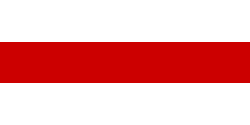Top Qs
Timeline
Chat
Perspective
Belarus (1991–1994)
Short-lived democratic period of Belarus from 1991 to 1994 From Wikipedia, the free encyclopedia
Remove ads
Between 1991 and 1994, the Republic of Belarus had no official constitution. It largely relied on government structures inherited from the Byelorussian Soviet Socialist Republic. The time period also was one of political tension.
Remove ads
History
Summarize
Perspective
During the August Coup in 1991, the Byelorussian Soviet Socialist Republic's branch of the Communist Party of the Soviet Union supported the putsch. However, once the coup failed, Chairman of the Supreme Council Mikalay Dzyemyantsyey (who was also first secretary of the Communist Party of Byelorussia) was forced to resign from his post, leading to the election of Stanislaw Shushkevich, a scientist, who while a member of the CPSU, was not directly tied to the Apparats. Alongside this, he was known previously for his criticism of the Soviet government's disregard for the Chernobyl Disaster.[1]
On August 25, 1991, the BSSR declared independence from the Soviet Union, becoming the Republic of Belarus. the White-red-white flag was re-adopted, alongside the Pahonia. The CPB was banned, alongside the larger Communist Party of the Soviet Union.[citation needed]
A constitution was adopted in 1994, leading to the end of the period between the BSSR and modern Belarus.
Chernobyl disaster
The Chernobyl disaster remained a top issue in Belarusian politics throughout the 1990s. In 1991, the Belarusian state had to craft policy to handle the disaster on their own after the Soviet Union's collapse, and by extension, research institutions to inform said policy. By the late 1990s, Chernobyl had faded out of public consciousness, and thus political discussion in the country.[2]
Remove ads
Politics
Due to many of the political structures of Belarus being inherited from the BSSR, minus the CPSU's party politics, Belarus between 1991 and 1994 acted as a Parliamentary republic with the Speaker as Head of State. This position was held by Stanislaw Shushkevich at first, but was later taken up by Myechyslaw Hryb, a pro-Russian conservative aligned with the Supreme Council.[1]
In early 1992, the Belarusian Popular Front petitioned the government for early elections, but the Supreme Council rejected the petition, claiming massive irregularities, despite showcasing no evidence for such. As a concession to the opposition, parliamentary elections were set for March 1994. However, electoral reform failed to pass led to an ambiguous state for elections. Concerns stated by other countries, including the United States over continued delays in new elections were dismissed by the largely conservative Supreme Council as "interference in Belarusian affairs."[3]
Remove ads
Economy
Contrary to conditions in the other post-Soviet states, the Belarusian industrial sector initially had less severe decline, due to much of the government reluctant to adopt Shock therapy.[4] Belarus also assumed 4.13% of the Soviet Union's debt, which it would later transfer to Russia in exchange for Soviet assets.[5]
Foreign relations
During the early 1990s, Belarus had a very contradictory foreign policy, due to the various conflicts between the branches of government. The Foreign Minister at the time, Petr Krauchanka, advanced claims on neighboring Lithuania with a nationalist outlook, while Stanislau Shushkevich rejected such claims, and attempted to guarantee the current borders of the country. The Polish-Belarusian state declaration, signed in October 1991, ended Belarusian claims on Polish territory, and calmed fears amongst the small nationalist movement of Polish irredentism.[6]
Remove ads
Demographics
Eastern Orthodox Christianity was (and still is) the main religion in Belarus. In the early 1990s, 60% of Belarus identified with Orthodoxy. Catholicism sat at about 8 to 20% of the population in the early 90s, with an estimate that 25% of them were ethnic Poles. This figure also includes the Belarusian Greek Catholic Church.[8] In 1990, there were about 350 Protestant communities.[8]
Remove ads
Human rights
Belarus was classified as "Partly Free" by Freedom House in their 1992–1993 report, with criticisms including the continued state ownership of media outlets and political conflicts getting in the way of reform.[9]
References
Wikiwand - on
Seamless Wikipedia browsing. On steroids.
Remove ads




